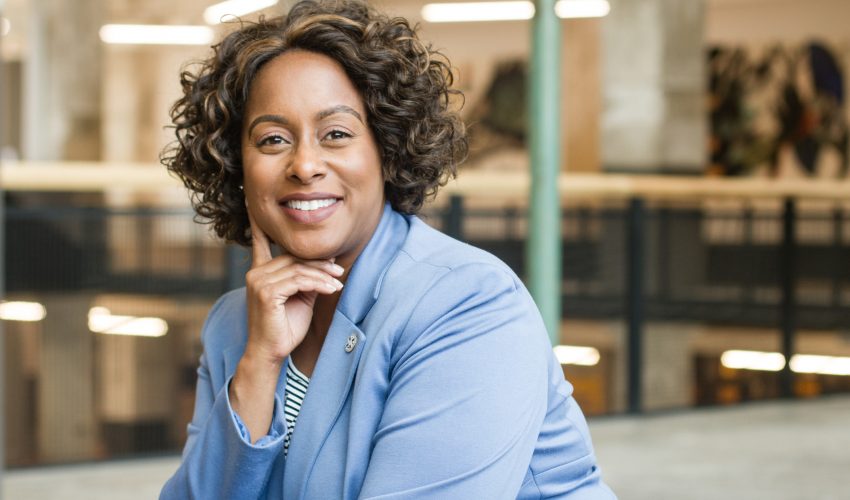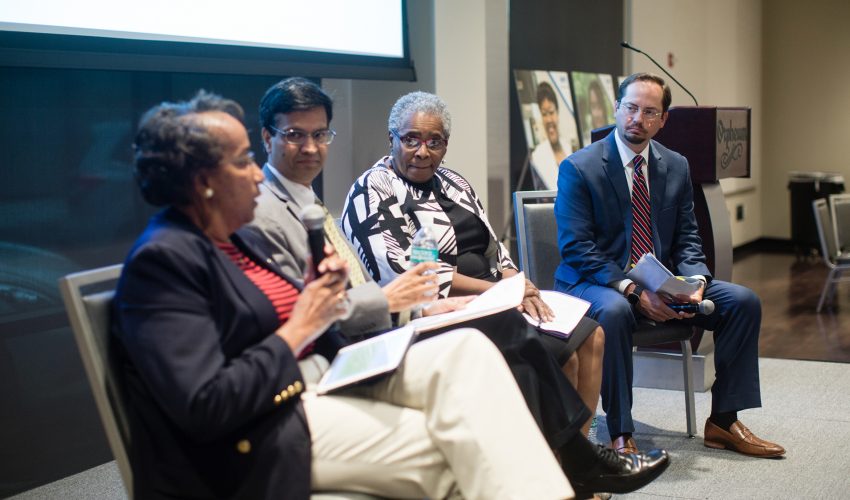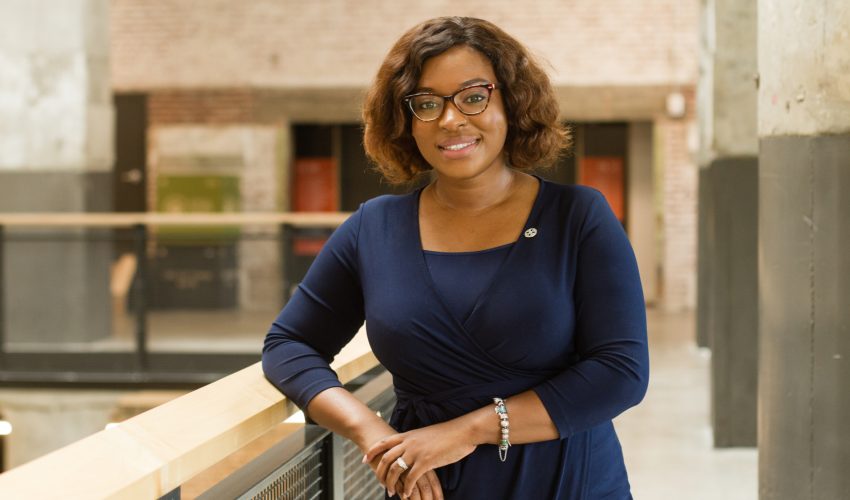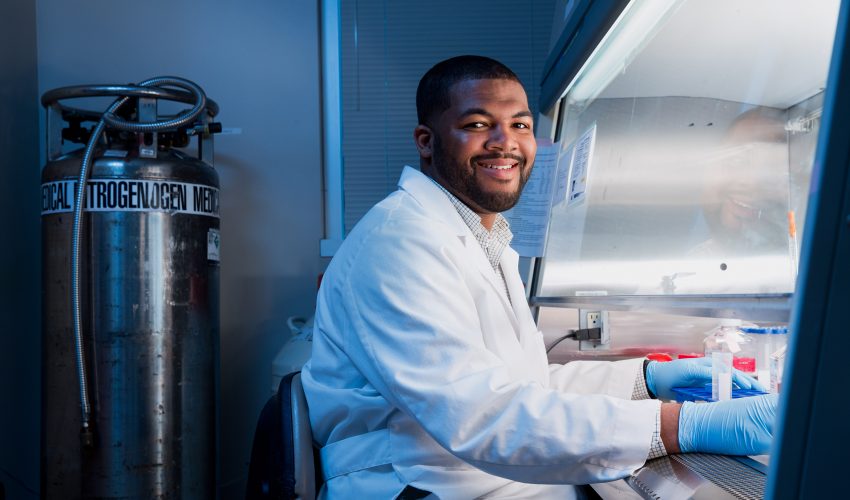Have you ever been in a situation when you needed something done but the person you were talking to didn’t understand you, or worse, dismissed your concern as unimportant? If so, did you ever get to the point that you just threw your hands in the air and gave up?
Imagine if that happened when it came to your health.
“Historically, minorities have not always been treated well when seeking health care, which may result from issues with implicit or unconscious bias,” says Chara Stewart-Abrams, Memphis chapter president of the National Association of Health Service Executives (NAHSE), an organization dedicated to developing greater minority representation in health care leadership and improving care for minority patients. “When a patient is not treated well, mistrust of the health care provider can develop. It may be the difference in the patient not getting the proper treatment or not seeking treatment at all.”
Add to that the fact that minority patients with lower incomes often face obstacles to accessing health care — transportation, cost and worries about job loss. The reluctance to go for treatment until absolutely necessary means that these patients have less preventive care, and so arrive in worse health when they do seek care.
Both of these factors contribute to health disparities — lower life expectancy and higher incidences of certain diseases and chronic conditions among disadvantaged populations in comparison to the national average.
One study found that addressing these inequities could lead to more than $230 billion in direct medical cost savings in the U.S. in a four-year span of time.

Chara Stewart-Abrams, Memphis chapter president of the National Association of Health Service Executives (NAHSE)
Inclusion matters
In Tennessee, nearly 17% of the population is African-American, while 5.7% of physicians are. The numbers are equally skewed among the Hispanic/Latino population, with just 1.6% of physicians compared to roughly 5% of the population.
This is a contributing factor in the country’s minority health disparities problem. Compared to the non-Hispanic white population:
- African-American adults are 40% more likely to have high blood pressure
- African-American adults are 80% more likely to be diagnosed with diabetes
- The infant mortality rate for African Americans is 2.2 times the rate for whites
- Hispanic women are 60% more likely than whites to be diagnosed with cervical cancer and 30% more likely to die from it
- Hispanic adults are almost twice as likely to be diagnosed with diabetes and 40% more likely to die of the disease
- Despite having lower rates of hepatitis C, Hispanics are 40% more likely to die from the disease
With minorities in Tennessee making up more than 20% of the population, the health care industry is taking steps to address the issue of disparities. Cultural competency and cultural humility training gives current caregivers greater insight into their patients’ experiences during an interaction, so there will be less chance of unintended slights that lead to a lower level of care.
This involves greater understanding of patients’ lives outside the hospital walls, withholding judgment based on the caregiver’s own cultural beliefs and engaging in productive communication with the patient.
Encouraging greater diversity and inclusion in the health care workforce as well as the support of industry leadership helps to address the issue from another angle by incorporating that understanding and empathy directly into the core of care. Not only does seeing people who “look like me” offer reassurance to patients that they will feel understood, but the facility’s staff is exposed to points of view from peers that they might not have previously considered.

Renee Frazier, left, speaks about health disparities at a Memphis forum as Dr. Manoj Jain, Dr. Altha Stewart and BlueCross COO Scott Pierce listen. Click the photo to learn more.
Offering understanding
Mario Rodriguez, a registered nurse at LeBonheur Children’s Hospital in Memphis and past BlueCross Power of We scholarship recipient, sees just how much his presence makes a difference to frightened patients and their worried parents. His family came to Tennessee from Mexico in 2000, when he was seven years old, and always encouraged him to pursue an education. He was the first in his family to attend college, and he understands how it feels to be out of one’s element without a trusted support system to guide the experience.
“Here in Memphis, I get the privilege of seeing people from all over the world who come to the hospital,” Rodriguez says. “There is a large immigrant population, with many who speak little to no English, and it may be their first time in a hospital. They are hesitant and nervous about being understood.
“I am thankful that, because of my own background, I can more personally connect with those families.”
“I can speak to them and they feel more at ease. When they are less anxious and confused, we can establish trust, and everyone feels relieved.”
Serving patients where they are
Outside the hospital setting, a more diverse caregiver population can help to encourage preventive health care. Studies show that minority physicians are more likely to set up practices in underserved areas, where many of the patients use Medicaid or are uninsured. Researchers noted that their findings were not meant as an argument for “de facto medical segregation” or to dismiss the efforts of nonminority doctors who care for an underserved population.
“Nonetheless,” the study noted, “It is clear that the preferences of physicians in choosing practice settings and of patients in choosing physicians combine to create an outsized role for minority physicians caring for the disadvantaged.”
Building blocks to greater diversity
With a clear view of the benefits of greater minority presence in the health care workforce, NAHSE is taking several approaches to achieve this goal:
1. Help those currently in the workforce to move into leadership positions
“The leadership level is where policy change occurs,” says Stewart-Abrams. “If you have minorities on a hospital board and in the C-suite, that may be the difference in what the hospital is able to offer to its minority or underrepresented patients. They can share their perspective to benefit patients, improve access, and may be more apt to expand services in underserved areas.”
Still, the path to leadership can be difficult for minority caregivers to navigate. A self-perpetuating cycle may be in place, with a lack of senior executives who can serve as mentors to the next generation of leaders. NAHSE is one of a number of organizations that offer opportunities for networking and leadership development for minority members to disrupt that cycle.
“I have worked in health systems all across the country and had never seen a minority in a senior executive position prior to joining NAHSE,” says Erica Plybeah Hemphill, founder of MedHaul, a Memphis-based health care technology startup.
“It’s so important to have peers who you can talk to when something happens at work, whether it’s a personal interaction that upset you or losing out on a promotion that you felt qualified for.”

Erica Plybeah Hemphill
2. Support students who have an interest in health care in pursuing their career goals
Mario Rodriguez was a smart, motivated student who faced both financial and social hurdles to higher education. The BlueCross Power of We scholarship gave him and continues to give other high-achieving students like him the financial help needed to attend college. That support is critical.
In addition, these students are often the first in their family to go to college, and they need a social support system that will ease their way through a completely unfamiliar experience.
NAHSE is part of the BlueCross Power of We scholarship selection process and works to keep recipients on track so that they will succeed.
“The Power of We scholarship is a lot more than just funding,” Hemphill says. “Some of these students are dealing with so much and for them to keep up a 3.5 grade point average is tough. One of our students was homeless during the interview process. So we are not only funding a student but investing in them.”
Just as Hemphill found a support network through NAHSE, the Power of We scholarship recipients establish connections with other students and professionals in the health care field who can advise them.

2017 BlueCross BlueShield scholarship recipients. Click the photo to read their story.
3. Educate the community about the health care field and encourage them to learn more
When a community is underserved by health professionals, its children don’t see people who look or talk like them in the roles of doctors, nurses or pharmacists.
Going into schools and neighborhoods to introduce African-American kids to African-American health care leaders, or Latino kids to Latino health care leaders opens up a world that didn’t exist to them before.
“NAHSE has adopted a high school in Memphis that offers vocational training in health care occupations,” Hemphill says. “One young lady living in a very impoverished area told us that she didn’t realize that black people could have real jobs. Most of the adults she sees work in low-paying jobs, and for her and others to see us and talk to us shows them what is possible.”
Creating a pipeline into the field is the first step, and with continued support and encouragement along the way — developing soft skills, offering financial aid for further education, assisting in job placement, providing networking opportunities — members of these communities can find a place in health care and thrive.

LaDarius Millen, 2013 Power of We Scholarship recipient
The future is now
People who come into the health care field want to help others, and their jobs require staying informed on how to do that best. And so, while there is still a long way to go to reach a point of equal representation, hospitals and physician practices are already embracing the goal of a diverse workforce because it helps patients.
The next generation of health care workers will almost certainly be more reflective of the general population as these efforts continue.

Click the photo to learn more about diversity health in Tennessee.



